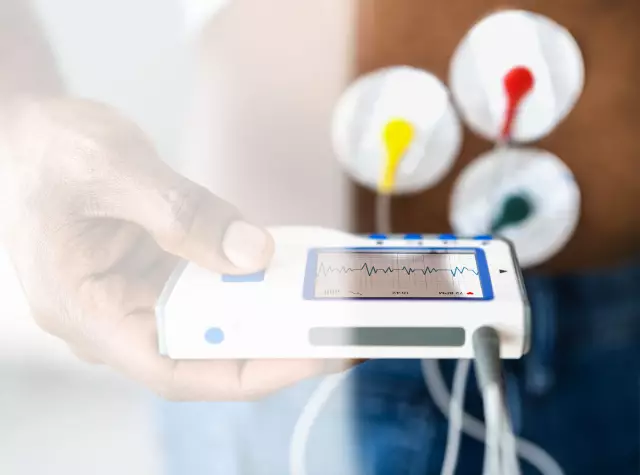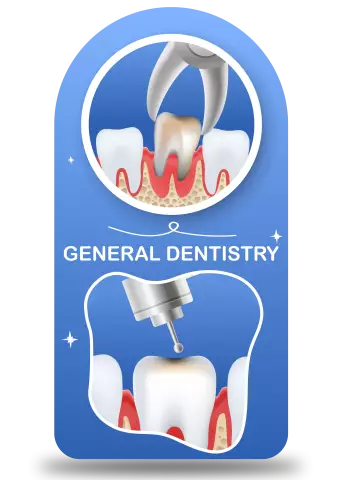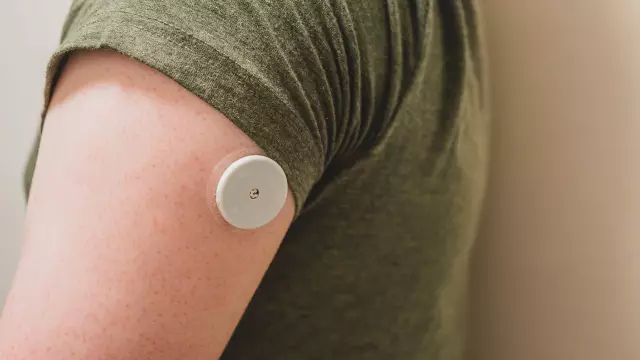- Author Rachel Wainwright [email protected].
- Public 2023-12-15 07:39.
- Last modified 2025-11-02 20:14.
Halter

Holter monitoring is a method of functional diagnostics that allows daily monitoring of the electrocardiogram. ECG recording is carried out continuously from 24 hours to three days. Holter is used to monitor the ECG - a small portable recorder that records the round-the-clock work of the heart and records data on its work per day on a computer. These records are subsequently deciphered by a cardiologist.
Holter monitoring is named after the researcher Norman J. Holter, who first put this device into practice in 1961.
When installing a holter monitor, electrodes are attached to the patient's chest. The electrodes, in turn, are connected to a recording device. Of course, the patient experiences certain inconveniences while wearing the device, however, the study itself is very informative and accurate, which allows the cardiologist to determine an accurate diagnosis.
The data processing program provides the analysis and determination of all types of heart disorders, in particular angina and arrhythmia attacks, which can significantly increase the effectiveness of the treatment of cardiovascular diseases.
Who is Holter Monitoring for?
With the help of a holter, an ECG is prescribed mainly to determine heart rhythm disturbances - episodes of atrial fibrillation, extrasystoles, etc., which are rather difficult to detect during a short study - a conventional electrocardiogram.
It happens that some atypical contractions for a healthy heart muscle appear only during a period of active physical activity, strong emotional shock, or in other situations. In these cases, such violations cannot be recorded using a conventional electrocardiogram, while with holter monitoring, the patient can lead his usual lifestyle: engage in a certain sport, work, take any position of the body, etc.
Also, with the help of a Holter study, it is possible to determine various violations of the blood supply to the heart muscle, in particular, a change in the ST segment during sports or physical activity.
Can a Holter study negatively affect a patient's health?
Holter ECG does not represent any harm to health. There is also no risk of electric shock.
To avoid damage to the device while wearing it, it is not recommended to take a bath or swim, so that water does not get inside. It is also not recommended to go through the metal detector while wearing a holter.
How is the Holter Monitor installed?

Before the device is attached to the patient's body, he is recommended to take a shower, since in the next day or even more he will not be able to take a bath and remove the monitor.
The doctor fixes the electrodes on the patient's chest and adjusts their position. Subsequently, the doctor connects the electrodes to the wires of the recording device, which is attached to the patient's body with special belts.
The doctor instructs the patient, teaches him to keep a diary. This is necessary for the correct decryption of the data received from the device. The patient records the periods of sleep, wakefulness, physical activity, rest and all symptoms (sternum pain, tachycardia, arrhythmia, etc.) with the exact time.
After installing the device and receiving a list of instructions, the patient can return to his usual rhythm of life and everyday concerns.
Holter monitoring is an absolutely painless procedure. The patient experiences a slight inconvenience only while wearing the device, when the wires and the box of the device are hidden under clothing. During sleep, it is not recommended for the patient to roll over on his stomach, as the electrodes may move in this case, which will disrupt data recording.
Holter study results
The holter is removed directly by a cardiologist or a nurse. The patient provides the physician with an activity and symptom diary, which the physician examines along with the device data.
Depending on the situation, the doctor makes a final diagnosis or sends the patient for an additional examination. If during the day the results of the Holter study did not allow the doctor to draw up a definite picture, he can prescribe the patient to temporarily wear a device that records the heart rate, which the patient will activate himself during the onset of anxiety symptoms.
Found a mistake in the text? Select it and press Ctrl + Enter.






